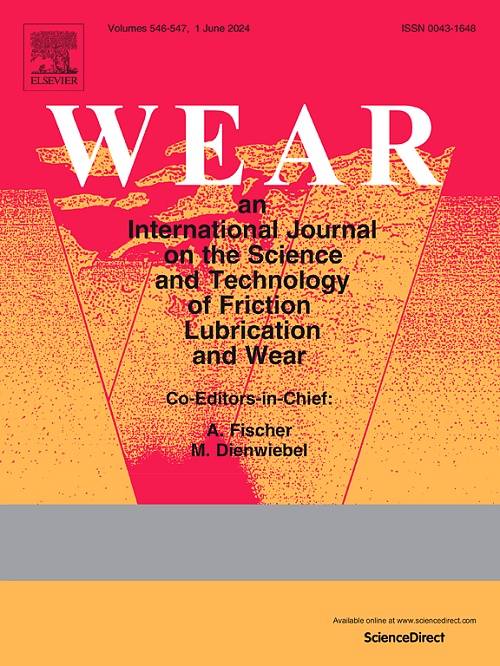Streamlined numerical modeling of solid particle impacts and erosion using a fully eulerian technique: An experimentally validated comparison to Lagrangian and meshfree methods
IF 6.1
1区 工程技术
Q1 ENGINEERING, MECHANICAL
引用次数: 0
Abstract
Solid particle erosion modeling is a highly demanding task that, despite the enormous growth in global computing power in recent decades, often requires significant time and geometric scaling compared to real-world phenomena to achieve reasonable execution times. This study considered the simulation of solid angular particle impacts against AA6061-T6 and oxygen free high conductivity (OFHC) copper targets, and multi-particle erosion by 150 μm diameter alumina powder in AA6061-T6, using conventional Lagrangian finite element method (FEM), smoothed particle hydrodynamics (SPH) and fully Eulerian models. The simulations were compared based on their computational efficiency and validated using published experimental data from Papini's research group. The Eulerian models predicted crater profiles and rebound kinematics for planar impacts, up to 88 m/s, with a 12.1 % average relative error compared to 15.9 % and 21.3 % for the SPH and FEM models, respectively. The Eulerian models also accurately predicted surface chipping despite the omission of a material failure algorithm. For the multi-particle simulations, crater size and volume distributions from 372 randomized impacts and steady-state erosion rates imparted by 1.5 g/min, 117 m/s incident alumina powder jets were predicted within 15 % of experimental values for the Eulerian and SPH models. The execution times were, on average, 2.2 times faster for the Eulerian models than the complementary SPH models and 6.5 times faster than conventional FEM. These findings highlight opportunities for the development of numerical models of erosion phenomena with more realistic physical domains, and greater accessibility to professionals with limited computational resources.

采用全欧拉技术的固体颗粒冲击和侵蚀流线型数值模拟:与拉格朗日和无网格方法的实验验证比较
固体颗粒侵蚀建模是一项要求很高的任务,尽管近几十年来全球计算能力有了巨大的增长,但与现实世界的现象相比,通常需要大量的时间和几何缩放才能实现合理的执行时间。采用传统的拉格朗日有限元法(FEM)、光滑颗粒流体力学(SPH)和全欧拉模型,模拟了固体角颗粒对AA6061-T6和无氧高导电性(OFHC)铜靶的冲击,以及直径为150 μm的氧化铝粉对AA6061-T6的多粒子侵蚀。根据计算效率对模拟进行了比较,并使用Papini研究小组发表的实验数据进行了验证。欧拉模型预测了高达88 m/s的平面撞击的陨石坑轮廓和反弹运动学,平均相对误差为12.1%,而SPH和FEM模型分别为15.9%和21.3%。欧拉模型也准确地预测了表面切屑,尽管遗漏了材料失效算法。在多粒子模拟中,从372次随机撞击和1.5 g/min, 117 m/s入射氧化铝粉末射流中获得的稳态侵蚀速率中,陨石坑的大小和体积分布在欧拉模型和SPH模型实验值的15%以内。欧拉模型的平均执行时间比互补SPH模型快2.2倍,比传统有限元模型快6.5倍。这些发现强调了发展具有更真实物理域的侵蚀现象数值模型的机会,以及对计算资源有限的专业人员更大的可及性。
本文章由计算机程序翻译,如有差异,请以英文原文为准。
求助全文
约1分钟内获得全文
求助全文
来源期刊

Wear
工程技术-材料科学:综合
CiteScore
8.80
自引率
8.00%
发文量
280
审稿时长
47 days
期刊介绍:
Wear journal is dedicated to the advancement of basic and applied knowledge concerning the nature of wear of materials. Broadly, topics of interest range from development of fundamental understanding of the mechanisms of wear to innovative solutions to practical engineering problems. Authors of experimental studies are expected to comment on the repeatability of the data, and whenever possible, conduct multiple measurements under similar testing conditions. Further, Wear embraces the highest standards of professional ethics, and the detection of matching content, either in written or graphical form, from other publications by the current authors or by others, may result in rejection.
 求助内容:
求助内容: 应助结果提醒方式:
应助结果提醒方式:


